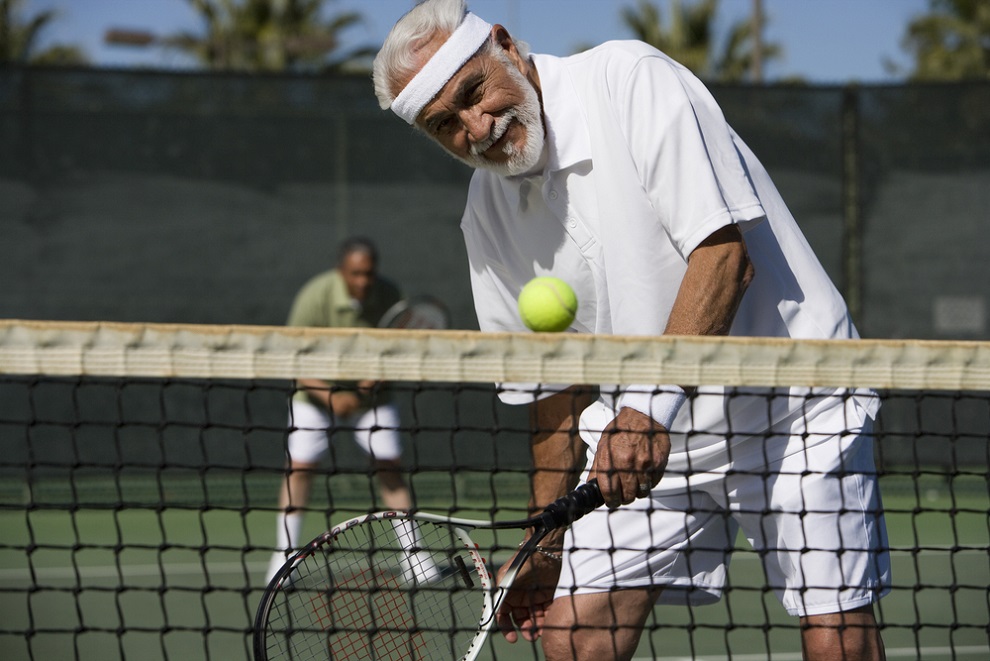When you're really into your workouts and feel great, it can be tempting to skip rest days. After all, you're making progress, your energy is high, and every session buzzes you.
More workouts must always be a good thing, right? Not necessarily.
Like other things in life, exercise requires balance. While it's good that you wish to push harder, rest is a crucial part of any workout or training plan. Even professional athletes include rest and lighter sessions in their training schedules.
Any research on muscle growth and strength training would tell you that muscles grow during recovery, not while working out. That's why rest days are vital to build mass.
This article will explain why rest days are crucial, how much rest you need, and more.

Why You Should Take a Rest Day?
Whether you have just started out or are a seasoned athlete, taking a rest day is essential for anyone who exercises regularly.
Here are a few reasons why rest days should be a key part of your workout routine:
Rest Days Help You Get Stronger
Contrary to what many believe, rest days don't mean lying around doing nothing. In fact, it's a time when your body actually benefits from exercise. Rest is key to muscle growth.
When you exercise - whether performing an intense sweat session or lifting weights - microscopic tears form in your muscle tissue. During rest, cells called fibroblasts repair these tears, helping your muscles heal and grow stronger.
Your muscles also store carbs as glycogen, which your body uses for energy during your strenuous workouts. Taking a break allows your body to restore these energy levels so you're ready for your next workout.
Prevents Muscle Fatigue
Overtraining without enough rest can lead to muscle soreness and fatigue. Especially if you're training to failure for muscle growth and/or strength.
If the glycogen levels in your body remain low due to excessive exercise, your muscles won't have the fuel they need to perform even daily activities.
Giving your body time to rest restores these energy levels and prevents fatigue, allowing your upper and lower body to function properly without wearing out.
Reduces Risk of Injury
If you skip rest days, you can suffer injuries that may sideline you for longer periods.
When you're physically and mentally tired, you're more likely to have poor form or even trip and fall. Plus, you're even at risk of overuse injuries as you constantly push your body without giving it time to recover.
Believe it or not, increasing your workout volume or intensity without enough rest is a common cause of injuries like stress fractures and tendinitis.
In fact, a recent study found that overuse injuries are the most common in top athletes, often leading to at least three weeks out of training.
To avoid being out of action for weeks or months, make sure to take the necessary time to rest and recover.
Improves Performance
Overtraining can lead to decreased workout performance. You might find it harder to push yourself, and your endurance, agility, and reaction time could suffer.
Incorporating rest days into your training regimen will improve your energy levels, motivation, and fitness gains. Rest lets your body recharge so that you can perform at your best in your next workout.
Supports Healthy Sleep
While a workout session can improve sleep, too much exercise without enough rest can have the opposite effect.
Physical activity - including strenuous exercise - causes your body to produce energy-boosting hormones such as cortisol and adrenaline. However, constant exercise can lead to an overproduction of these hormones, making it difficult to get quality sleep.
Rest days allow your body to reset these hormone levels, helping you get the restful sleep you need for recovery.
How Are Muscles Fueled?
Muscles function using three energy systems: the phosphagen, anaerobic (glycolytic), and aerobic (oxidative) systems. These systems provide energy to your muscles by creating adenosine triphosphate (ATP), which powers muscle cells.
The first two are short-duration systems, which means they deliver high energy for a short time.
The phosphagen system powers muscles for up to 30 seconds during high-intensity activities. After 30 seconds, the glycolytic system kicks in. It provides energy for up to 3 minutes and supports muscle groups during moderate-intensity activities.
These two systems are commonly used during resistance training sessions focused on strength and muscle growth.
When exercise lasts longer than 3 minutes, the aerobic system takes over and is often involved in lower-intensity activities. These energy systems work together to fuel your body during all types of activity.
For instance, when lifting heavy weights, your muscles generate high force for a brief time, but you'll need a longer rest period to recover and repeat the same effort.
The amount of rest you take can vary. For example, if you want to build muscle size or improve endurance, you can change your rest periods to match your fitness goals.
Let's find out how much rest is required between each workout for muscle growth and other aspects.
How Much Rest Between Workouts for Muscle Growth
When deciding how long you should rest between sets, consider how tough each interval is.
Are you doing sit-ups or lifting heavy weights? Running sprints or doing squats? Your rest time should match your intense workouts.
Shorter rest periods work well for less intense exercises. This keeps your heart rate up and increases the overall intensity of your workout.
However, you may need longer rest periods for more demanding workouts to recover and fully give your best effort in each set.
Also, it's important to think about your training goals since different rest times can lead to different results:
- Muscular Endurance: If you focus on endurance, such as doing a high number of reps with lighter weights, you should look for shorter rest periods of 20-60 seconds between sets. This is good for sports like swimming, where endurance in certain muscle groups matters.
- Muscle Growth: For bodybuilding or increasing muscle size (hypertrophy), do a high volume of reps with lighter weights and take moderate rest periods of 30-90 seconds between sets.
- Power: If you train for power, focus on quick, explosive movements with light to moderately heavy weights. Use longer rest periods of 2-5 minutes between sets to recover fully.
- Strength: To build strength, lift heavier weights with fewer reps. Like power training, take longer rests of 2-5 minutes between sets to ensure full recovery.
If you're new to strength training, it's good to take extra rest time between sets. This helps you avoid feeling sick or lightheaded and ensures that you don't burn out too quickly.
Remember, it's important to listen to your body and give yourself enough recovery time so you can keep progressing.
Now that you know how much rest you need between workouts, let's explore how many rest days are needed to build muscle.
How Many Rest Days to Build Muscle?
The number of rest days you need depends on several factors, including the length of your workouts, fitness level, goals, age, and genetics.
Every person is different - some people simply need more rest and recovery than others. Generally speaking, the more intense the workouts, the more recovery time the body needs.
For women, hormonal changes during the menstrual cycle can also play a role. During the period, levels of progesterone and estrogen drop, which may make you feel more tired than usual.
While it's good to exercise when you're low on energy, sometimes taking a rest day can help you recharge and perform better in your next workout.
Experts recommend up to three rest days per week as optimal rest days for muscle growth - especially if you exercise for general health and well-being.
However, if you're new to fitness, lifting weights, or doing strenuous exercise multiple times a week, you may need more rest or active recovery days to avoid the overtraining syndrome.
You can also schedule lighter workouts after intense sessions to build more rest into your training and reduce the risk of overdoing it.
For strength training, alternating between upper and lower body workouts can also help give specific muscle groups more time to recover.

What Should You Do on Rest Days?
Here are a few things you should consider doing to get the most out of your rest days:
Eat Balanced Meals
On rest days, your body typically needs fewer calories since you're less active.
However, instead of cutting a specific number of calories, simply listen to your body. Your hunger and fullness cues will naturally guide you to eat the right amount.
Still, it's important to get enough protein, even on your rest days. Protein helps your muscles repair and recover. Active people need 1.2 to 2.0 grams of protein per kilogram of body weight daily, spread evenly throughout the day.
Make sure to focus on the following diet and protein intake on your rest days:
- Carbohydrates: Consume complex carbohydrates to restore your glycogen levels. Depending on your activity level, you may need 3 to 10 grams of carbohydrates per kilogram of body weight daily.
- Water: No matter whether you exercise or not, you should always stay hydrated. Proper hydration helps prevent muscle cramps and ensures nutrients are delivered.
- Fruits & vegetables: They provide healthy carbs and essential nutrients to support recovery.
Perform Yoga
Yoga is one of the best activities for a rest day. Not only does it help improve body awareness, breathing, and flexibility, but it also helps you build strength and loosen tight muscles.
Not to mention, yoga also promotes relaxation. It leaves you feeling refreshed and ready for your next workout. You don't need much time to feel the benefits - just 10 to 15 minutes can support your recovery.
Engage In Low-Impact Workout (Active Recovery)
Low-impact exercise is another great option for rest days. Like yoga, these workouts help keep you active without putting too much strain on your body and offer a more relaxing way to stay fit.
Some examples of low-impact exercises include:
- Walking
- Casual swimming
- Biking
- Dancing
- Kayaking
Signs You Need a Rest Day
Listening to your body is crucial. If you notice any of these signs, it may be time you need a break:
You're Really Sore
It's common to feel sore after a workout, especially if it was intense or involved movements your body isn't used to. This soreness - often called delayed onset muscle soreness (DOMS) - usually peaks around 48 hours after exercise but can last longer.
If your soreness lasts more than a week or you experience significant soreness without any changes to your routine, it's a sign that you might need more rest.
If your soreness rates a 7 or higher on a 1-10 scale, it's definitely time for a break. You can rest the specific aching body part, like skipping an upper-body workout if your arms are sore, and focus on your legs instead.
You can also take a full rest day - it's perfectly fine. After all, your body deserves it!
You're Getting Sick
Without proper rest after a workout, your immune system can weaken so much that you may get sick.
While regular exercise boosts your immune system over time, excessive workouts can force your body to focus on muscle repair instead of fighting illness. When you feel sick, rest is always the best option.
You're Hitting a Plateau
Have you ever worked hard at the gym but stopped seeing results? Overtraining could be the issue.
When you exercise too much without giving your muscles time to heal, you actually break down more muscle than you build. This lack of recovery leads to a plateau in progress.
Add a few rest days into your routine to allow your muscles to repair and grow, and you'll likely start seeing results again.
Conclusion
Rest days help your muscles grow, recover, and improve your overall performance. Without them, you don't give your body the time it needs to heal and grow stronger.
Incorporate rest days and active recovery into your training regimen. This will help improve your results, reduce your soreness, and minimize your risk of injury.
So, listen to your body and give it the time it needs to recover and prepare for your next workout.

Get TRT Online
Optimize Your Hormones





